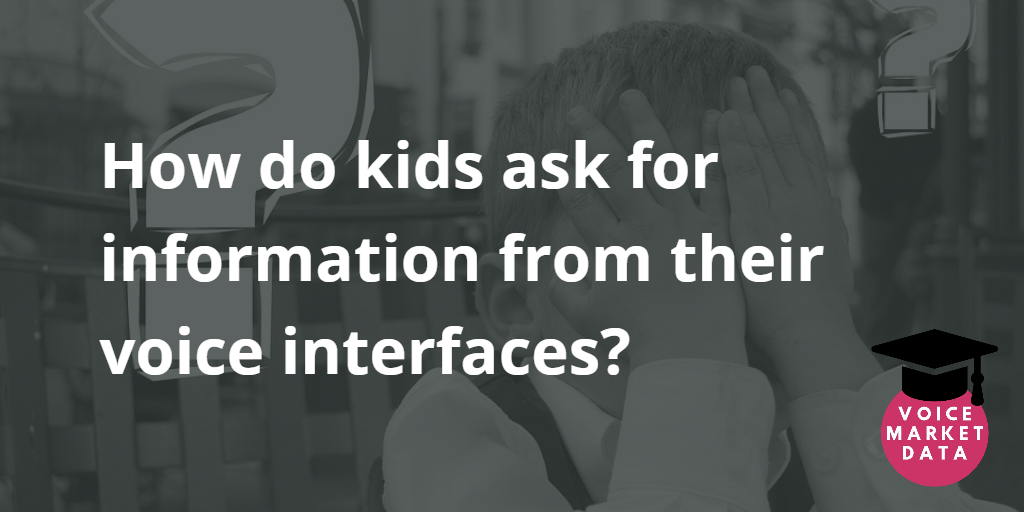TL; DR:
Kids prefer their voice interface to have a personality over ones that refer to them by name. There is no difference for adults between those two type of voice interfaces. When the interface does not understand them, kids tend to repeat the question.
What did they do?
The researchers tested 87 children and 27 adults at a State Fair. They used a “Wizard-of-Oz” process where there was a person controlling a voice interface (VUI). The participants had to find answers to questions using one of three interfaces:
- One that never referred to itself in the first person and didn’t mention the participant’s name
- One that referred to itself in the first-person but didn’t mention the participant’s name
- One that referred to itself in the first-person and mentioned the participant’s name
They looked at the types of interactions the participants used and after asked them how felt about the different interfaces.
What did they find?
Asking questions:
Kids used 7 approaches when the VUI didn’t understand them:
- Restate or repeat
- Substitute words: Change words in the statement without changing the information offered
- Reorder: change the order of the words without adding any information
- State context: Adding additional information
- Expanding pronouns: Replace a pronoun to a more precise description
- Adding context phrases
- Off-course: Give up and ask something unrelated
The most common way to answer when the interface didn’t understand was to repeat the question with any change. The second most common was to ask the same question but with some words changed. Most kids tried 3 or more strategies, but many repeated the same strategy until a hint was provided.
Interface:
Kids preferred the interface with a personality, but didn’t care whether it knew their name or not. Adults didn’t have a preference for either the interface with a personality or the one that referred to them by name.
What can you do with this?
These results suggest that if you’re building something for kids, where you’re providing information, you should invest in an interface with a personality, but you can skip having it use the user’s name. If you’re building for adults, they are both unimportant.
The researcher made 4 recommendations for voice interfaces:
- When you don’t understand, repeat what was heard. Kids are used to being misheard by VUI, so they’ll often focus on pronunciation. Knowing that the VUI hear them properly could lead to a different strategy.
- If a specific piece of context is needed but missing (e.g., year, identity of a particular pronoun), ask for clarification (e.g., “What is “it” in your question?).
- If you understand a part of the question but the whole question is too complex, provide some information on what is known and request clarification for the rest (Q: What is the wait time for the newest ride? A: I know that the newest ride at the fair is the “Vampire rollercoaster,” what would you like to know about it?”).
- If a particular style of question is too difficult for the system, make it clear this and provide guidance for a better question format (e.g., “Comparisons are hard for me. Can you ask about each part of your question separately?”).
Article citation
Yarosh, S., Thompson, S., Watson, K., Chase, A., Senthilkumar, A., Yuan, Y., & Brush, A. J. (2018, June). Children asking questions: speech interface reformulations and personification preferences. In Proceedings of the 17th ACM Conference on Interaction Design and Children (pp. 300-312). ACM.



